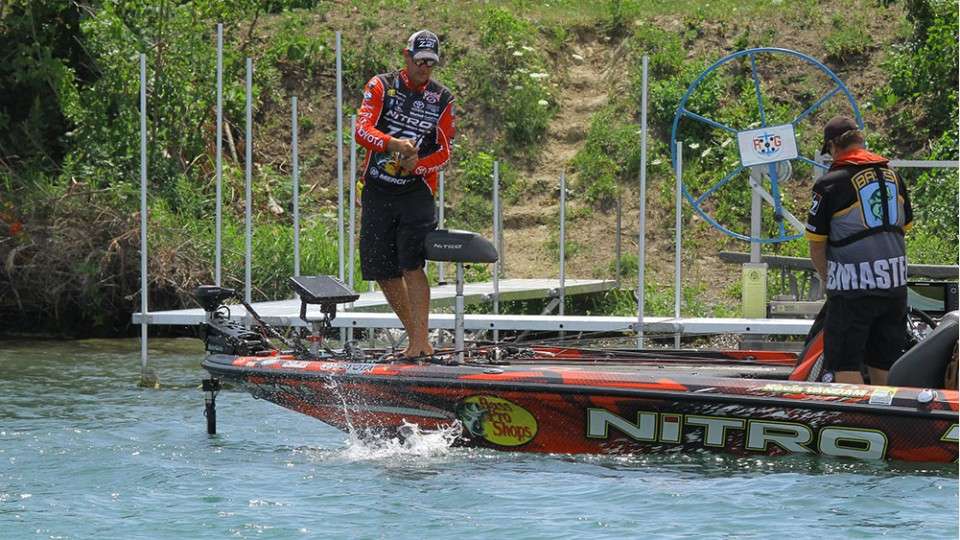
We’re in a fickle period of the season for southern reservoir bassin’. I’ve spent some time down here the past week or so, and it’s been tough.
We might be in mid-October, but the lakes are in that late-summer funk when the days are shorter but the water is still warm. It can be a challenging period, especially for someone like me who is a power fisherman.
The bass’ activity level is at a minimum unless you get some really favorable conditions, like a lot of rain or a major front coming in. Even with that, the fishing might pick up for a few days but goes right back to where it was.
The biggest reason for the slowdown is we’re in that early fall transition when the bait and bass are scattered and there is very little power generation at the dams to get them fired up. Some bait has moved into major tributaries, but the majority is scattered between off-shore structure and the creeks. When the bait is scattered, it’s difficult to find a good group of bass capitalizing on them.
The best solution I’ve discovered is to fish spots offering the highest percentage of success. It’s not a good time to fish expansive flats, ledges or grass beds unless you know the lake well and can go to the sweet spots that have been holding the fish.
But when you’re not familiar with a lake and it’s this tough, you have to focus on fishing for those resident fish, targeting those places where they live most of the season.
Boat docks are prime examples, but not those in marinas; target docks or even laydowns that are isolated and offer the best or only piece of cover on a bank. Those places hold resident fish – bass that never went out to the ledges.
Another example might be a bluff or rock point or any type of irregular characteristic that could hold resident fish. The more unique characteristics a place has – such as a channel swing on a point or bluff bank, or pencil reeds and hydrilla on a weedy point – the better the odds of getting a bite.
Don’t spend a lot of time fishing long stretches of bank. Make a few casts around the high percentage places and move down lake to the next.
The presence of baitfish, or if you’re seeing cormorants, herons on the bank or sea gulls circling a creek, are all good clues. Also, fish the windy side where you’re more likely to find active fish.
You can catch quality fish this way, but understand this isn’t the time of year you’re going to get 50 bites. You have to make each opportunity count and make precise casts to the most likely targets. In other words, don’t make an errant cast that might spook the one or two fish that might be there.
As far as baits, I’d skip a swim jig or swimbait under the dock or work it along laying logs. Walking and popper-style topwaters can be good, too. And don’t forget a frog; it can be a great bait for fishing over laydowns or under docks.
Sure, fishing will be tough during this transition until the water temperatures get into the low 60s and 50s. In the meantime, fish the high percentage areas and remember it’s all about the attitude!
Kevin VanDam’s column appears weekly on Bassmaster.com. You can also find him on Facebook, Twitter and Instagram.

